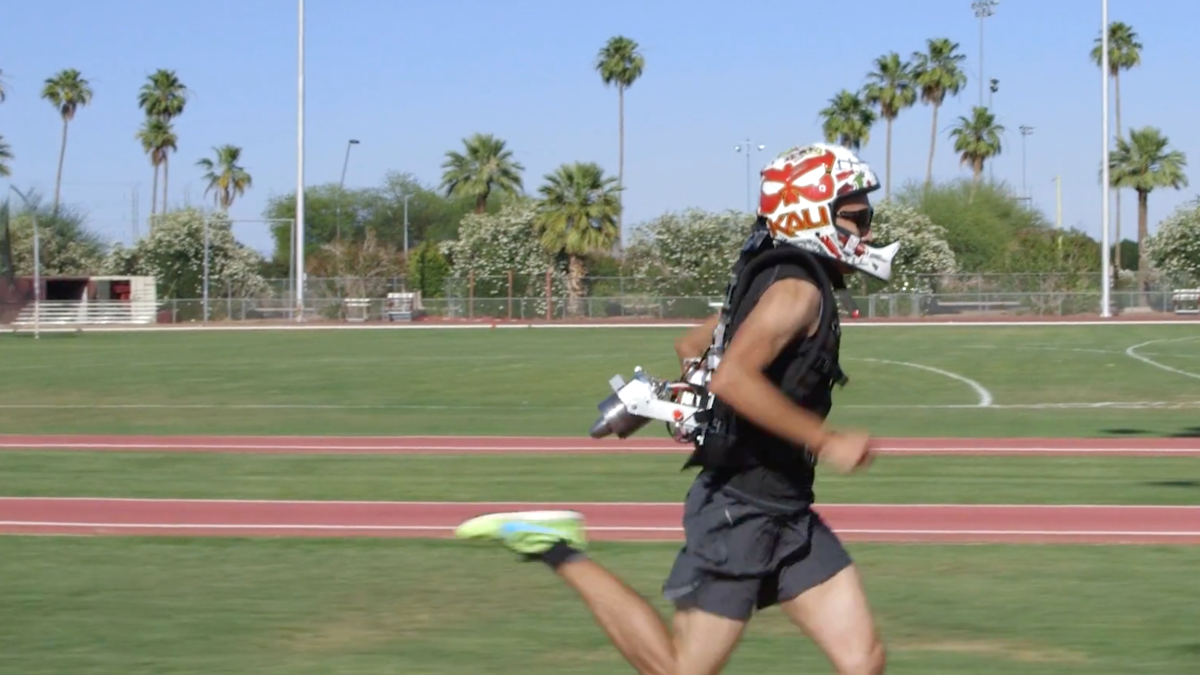A jet pack designed by an Arizona State University engineer with “a touch of Wile E. Coyote in him,” according to Sports Illustrated, has been updated to be lighter and better suited for use in extreme sports.
Jason Kerestes, robotics engineer with The Boeing Company, says he was able to “eliminate quite a bit of the weight that was on the original version” by getting rid of the aluminum and plastic framing.
Wearing the new, waist-mounted version, a bicycle rider on a test run was able to increase the top speed from 39 mph to 53 mph, and a rider on a long skateboard got up to 32 mph, Kerestes said.
The jet pack gained attention two years ago when a demonstration video circulated, featuring a runner on a track wearing a backpack-style prototype. Media outlets including Sports Illustrated and Gizmodo picked up the story, explaining the original goal of increasing the running speed of U.S. Army soldiers.
“The military gets the coolest toys first,” Gizmodo wrote.
“Lookout, Road Runner!” the Sports Illustrated headline touted.
Kerestes, who studied mechanical engineering as a master’s student at ASU, said that aside from making his jet pack smaller and framing it with carbon fiber, he’s been working on new technology with medical potential.
“I’m working on designing a new exoskeleton called REST-Exo, for robotic exoskeletal support technology, to help people that have trouble standing,” he said, mentioning people with knee or ankle injuries. He wants to be able to help them “get back up and walk.”
“Anything’s possible.”
More Science and technology

Ancient sea creatures offer fresh insights into cancer
Sponges are among the oldest animals on Earth, dating back at least 600 million years. Comprising thousands of species, some with lifespans of up to 10,000 years, they are a biological enigma.…

When is a tomato more than a tomato? Crow guides class to a wider view of technology
How is a tomato a type of technology?Arizona State University President Michael Crow stood in front of a classroom full of students, holding up a tomato.“This object does not exist in nature,” he…

Student exploring how AI can assist people with vision loss
Partial vision loss can make life challenging for more than 6 million Americans. People with visual disabilities that can’t be remedied with glasses or contacts can sometimes struggle to safely…
